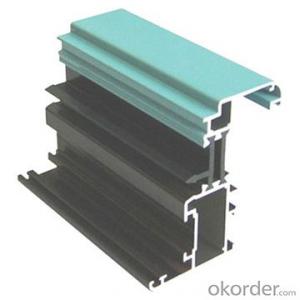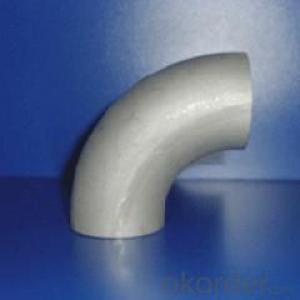Channel Aluminum Extrusion Profiles Hot Sale Aluminum Pallet for Warehouse Use
- Loading Port:
- China Main Port
- Payment Terms:
- TT OR LC
- Min Order Qty:
- -
- Supply Capability:
- -
OKorder Service Pledge
OKorder Financial Service
You Might Also Like
Hot Sale Aluminium Pallet Used For Warehouse
Specifications
Alloy: 5xxx and 6xxx
The weight is light
It is very clean
High load capacity
High quality: anticorrosion, rust protection and easy clean surface
Compatible for all pallet systems: wood, metal, plastic and slip sheet
Sizes: 36 x 36, 36ft x 42, 36 x 48, 42ft x 36, 42ft x 42, 42 x 48 and 48 x 48-inch and customized size is acceptable
Standard package: suitable for long ocean transporting
OEM&ODM is welcome
Last for life time
Packaging & Delivery
Packaging Detail: Carton, we also can pack as per customers' requirement
Delivery Detail: 25-30 days since we receive your advance payment
- Q: Can aluminum profiles be used in the production of agricultural equipment?
- Yes, aluminum profiles can be used in the production of agricultural equipment. Aluminum is a versatile and lightweight material that offers several advantages for agricultural applications. It is corrosion-resistant, which is essential for equipment exposed to outdoor conditions and various chemicals used in farming. Additionally, aluminum profiles can be easily shaped and customized to fit specific design requirements, allowing for the creation of complex and functional agricultural equipment. The lightweight nature of aluminum also makes it easier to transport and handle the equipment, reducing labor costs. Moreover, aluminum profiles are recyclable, making them an environmentally friendly choice for agricultural equipment production. Overall, utilizing aluminum profiles in agricultural equipment can enhance durability, efficiency, and sustainability in the farming industry.
- Q: How much does aluminum mold need?
- The cost of aluminum profile die is judged according to the size of the profile. The length of the profile diagonal and the length of the profile to be produced have direct influence on the die cost. For example, an outer diameter 60mm diameter 40mm of the aluminum tube, in general circumstances, open a diameter of 178mm, thickness of 120mm mold can be produced. But if you request that the length of the aluminum tube produced is 5 meters or longer, this should be a mold with a diameter of 220mm and a thickness of 138mm, so as to squeeze on a larger machine with a larger bar. Of course, this is only one, for example, specific questions should be analyzed in detail.
- Q: Can you quote me one according to the current market situation?
- Aluminum: aluminum ingot + processing fee + Spray + heat insulationAluminum plate: square meter, unit price (depending on thickness) + spraying, etc.You cannot quote without specific parameters
- Q: Is it possible to recycle aluminum profiles and what are the benefits of doing so?
- <p>Yes, aluminum profiles can be recycled. Recycling aluminum is energy-efficient, as it requires only 5% of the energy needed to produce new aluminum from raw materials. This process reduces greenhouse gas emissions and conserves natural resources. Recycled aluminum maintains its quality, making it suitable for various applications, including construction, automotive, and consumer goods. Proper recycling also helps to reduce landfill waste and promotes a circular economy.</p>
- Q: How do you calculate the weight-bearing capacity of aluminum profiles?
- When determining the weight-bearing capacity of aluminum profiles, several factors must be taken into account. These include the profile dimensions, the grade of aluminum used, and the specific requirements of the application. To start, it is necessary to ascertain the dimensions of the aluminum profile, including its length, width, and thickness. These measurements are crucial for calculating the cross-sectional area, a key parameter in determining the profile's load-bearing capacity. Next, the material grade of the aluminum used must be considered. Different aluminum alloys possess varying strength properties, so it is essential to know the specific alloy and temper designation. This information can be obtained from the manufacturer or supplier. Once the cross-sectional area and material grade are known, engineering standards or handbooks can be consulted. These resources provide load tables or formulas for calculating the safe load capacity of aluminum profiles. They offer a range of load ratings based on different loading conditions, such as static or dynamic loads, as well as factors like span length, support conditions, and safety factors. It is also crucial to take into account any additional factors that might affect the load-bearing capacity. These could include temperature, vibration, or potential impact forces. Adjustments to the calculated load capacity might be necessary to accommodate these factors. Furthermore, seeking advice from a structural engineer or an aluminum profile manufacturer can be highly beneficial. They can provide valuable insights and recommendations for more accurate calculations. They may possess specialized knowledge or testing data specific to the aluminum profile being considered, ensuring a more reliable assessment. In conclusion, calculating the weight-bearing capacity of aluminum profiles involves considering the dimensions, material grade, and specific application requirements. Consulting relevant resources or experts in the field is necessary to ensure accurate and safe load calculations.
- Q: In aluminum processing, countersunk holes and via holes what difference?
- Through the hole, as the name suggests, that is, through, through the appropriate size of objects or liquid holes, the role is: A, used for connection, can be threaded through holes. B, a cylinder for a piston engine. C, in the distribution of pump for transporting liquid, gas and dust loading objects etc.. D, in life, we are wearing clothes, trousers and hole application examples.
- Q: Whether aluminum profile of glass curtain wall needs compulsory test?
- Quality inspection standard for glass curtain wall project required2.7 quality assurance materialsFor the inspection of 2.7.1 aluminum alloy sections, the following materials should be provided:Product certification of 1. profiles.Mechanical performance test report of 2. profiles, profile should be imported by the State commodity inspection department inspection certificate.
- Q: This question asks if aluminum profiles can be used in cold weather conditions and if they maintain their properties in such environments.
- <p>Yes, aluminum profiles are suitable for use in cold climates. Aluminum is a durable material with excellent resistance to corrosion and weathering, which includes maintaining its integrity in low temperatures. It does not rust or degrade significantly in cold conditions, making it a reliable choice for construction and other applications in cold climates. However, it's important to consider the specific alloy and any protective coatings or treatments that may be necessary to ensure optimal performance in extreme cold.</p>
- Q: What is the limitation of aluminum bending
- Stretch before aging. After aging, the hardness of the material is higher, and then the tension bend is cracked.
- Q: What are the fire-resistant properties of aluminum profiles?
- Aluminum profiles possess excellent fire-resistant properties due to their high melting point of about 660 degrees Celsius (1220 degrees Fahrenheit). Additionally, aluminum forms a protective oxide layer when exposed to heat, which further enhances its resistance to fire. This oxide layer acts as a barrier, preventing oxygen from reaching the aluminum surface and inhibiting the combustion process. As a result, aluminum profiles are widely used in various applications where fire safety is crucial, such as building construction and transportation industries.
Send your message to us
Channel Aluminum Extrusion Profiles Hot Sale Aluminum Pallet for Warehouse Use
- Loading Port:
- China Main Port
- Payment Terms:
- TT OR LC
- Min Order Qty:
- -
- Supply Capability:
- -
OKorder Service Pledge
OKorder Financial Service
Similar products
Hot products
Hot Searches
Related keywords
























